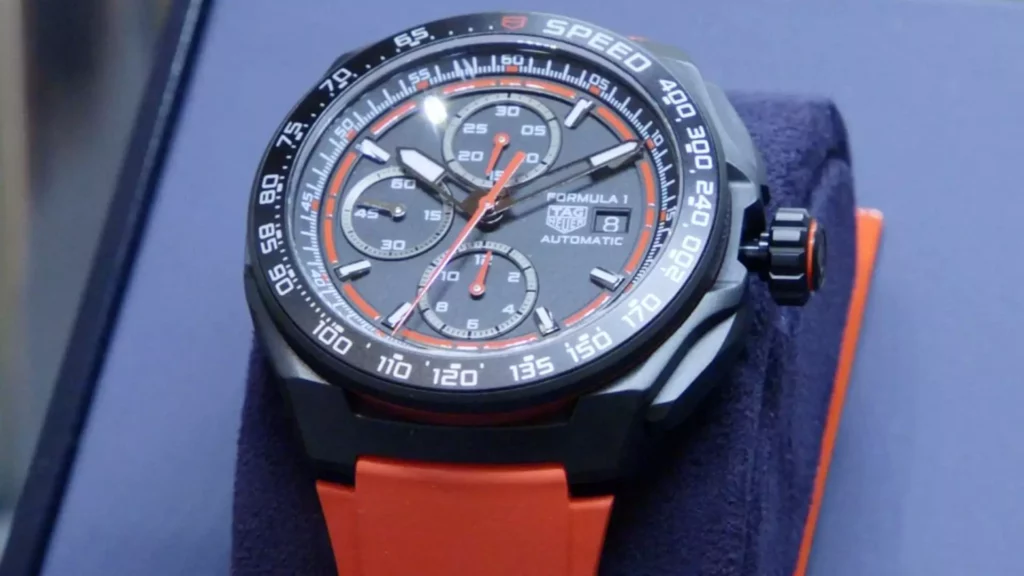After a year marked by stagnation and caution, luxury giant LVMH has made a remarkable comeback in the booming watch and jewelry market. With a modest but notable 3% increase in sales for their watches and jewelry segment, LVMH has demonstrated resilience amidst broader trends that saw declines in their fashion, leather goods, and spirits divisions. This unexpected rebound speaks volumes about shifting consumer preferences and the evolving dynamics of the luxury market. It’s not merely a tick in the right direction; it’s a louder, more assertive signal that discerning buyers are ready to redefine their luxury spending habits.
Central to this revitalization is the American consumer, whose renewed confidence in the economy, particularly following the recent U.S. presidential election, is reshaping the luxury retail landscape. Companies like Tiffany & Co. report astonishing sales, including a 9% jump in same-store sales during the fourth quarter. This contrasts against the backdrop of a Chinese market still reeling from economic strains. The idea that America’s wealthiest are reinvesting in luxury items is both refreshing and indicative of deeper socio-economic trends at play. Wealthy clients seeking a feel-good factor among the glitz and glamour of high-end jewelry signal that luxury is not just about possession; it’s intertwined with personal status and emotional engagement.
The Role of Innovation and Experience
LVMH’s success is not solely attributed to consumer confidence; rather, it intertwines with relentless innovation and the importance of curated shopping experiences. The conglomerate is pushing new boundaries by launching collections that meld artistry with cutting-edge technology. For instance, Louis Vuitton’s latest “Tambour Taiko Spin Time” collection draws inspiration from vintage airport flap displays, effectively bridging nostalgia with modern aesthetics.
Tiffany’s flagship location has undergone a stunning metamorphosis, partly thanks to hundreds of millions of dollars in renovation efforts directed at creating an unparalleled shopping experience. It’s not just about selling necklaces; it’s about establishing a destination—complete with art, fine dining, and exclusive VIP services—that fosters an intimate connection between the consumer and the brand.
The Rising Influence of Women in Luxury
Equally interesting is the shifting demographic of luxury consumers, particularly the rise of female purchasing power in a space traditionally dominated by male gift-givers. Bulgari’s CEO Jean-Christophe Babin notes a revolutionary shift toward gender equality in the luxury buying landscape. As women increasingly embark on their own journeys of financial empowerment through entrepreneurship and inheritance, they are recognizing their right to indulge in luxury items. The metamorphosis of women from mere observers in the luxury narrative to powerful consumers marks a critical turning point for brands, compelling them to rethink their marketing and product strategies.
Nevertheless, despite these positive developments, caution remains necessary. The looming threat of tariffs connected to U.S. and European trade relations could create a seismic impact for high-end watchmakers, particularly those heavily reliant on Swiss manufacturing. With the ever-present specter of further tariffs looming over them, this industry must remain agile. As much as brands eagerly plan elaborate launches to seize the moment, a sudden shift in political policy could tilt the balance, leaving them in a precarious situation.
The proactive approach from LVMH brands to mitigate risks by diversifying markets and maintaining a robust global sales strategy echoes the need for resilience in today’s unstable economic climate. While optimism prevails in the luxury sector today, it isn’t blind; it’s anchored in an awareness of both opportunities and challenges that lie ahead.
The Fantastic Future of Luxury
As LVMH readies itself for what could be an exceptionally lucrative 2025, the conglomerate is not just observing the trends—it’s crafting them. With stunning designs, a focus on high-end clientele, and a comprehensive understanding of consumer dynamics, LVMH appears well-positioned for future success. Their pursuit of cultivating trust and respect in the realms of timekeeping and jewelry appears to reflect a long-term vision that could redefine luxury over the next generation.
The marketplace is ever-changing, yet LVMH’s commitment to quality and innovation set a gold standard that others in the luxury industry must now strive to meet. This determination paints a compelling picture of the luxury landscape, suggesting that while challenges will always exist, the allure of exquisite products and exclusive experiences will continue to resonate deeply with consumers, shaping a bright and prosperous future for the luxury segment.

